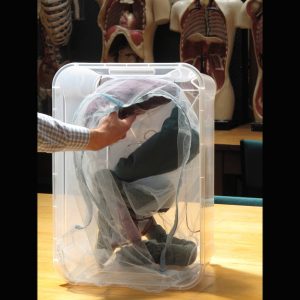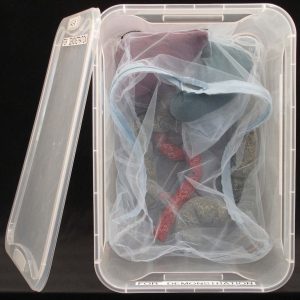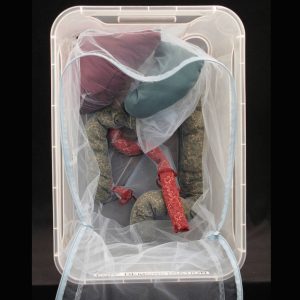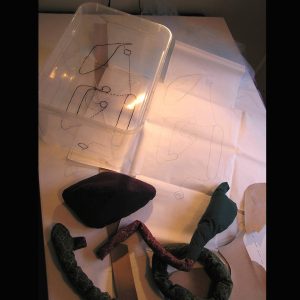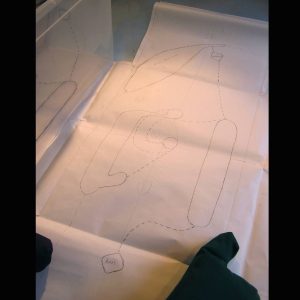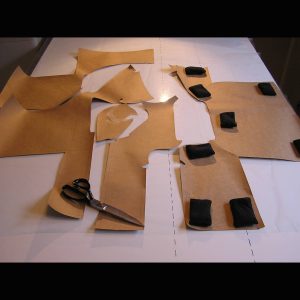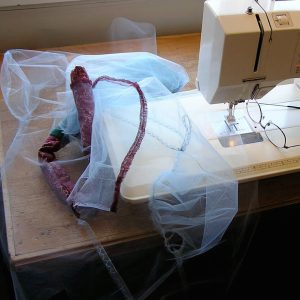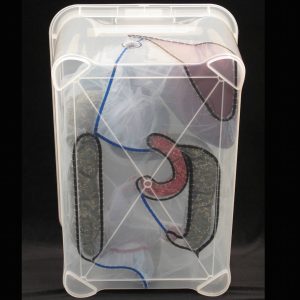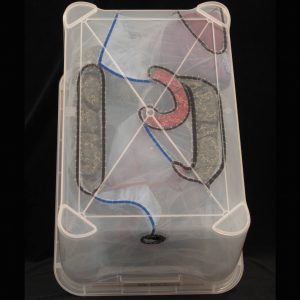Patterns
6
Introduction
The layers of the abdominal peritoneum.
Model
Construction
This model started with a suitable sized plastic box and lid, representing the abdominal cavity. The bare areas and attachment sites of the peritoneum were marked with electrical tape and patterns were made for sections of the parietal peritoneum.
Fabric models of the liver, stomach, initial section of duodenum, final section of small intestine and large intestine were made and stuffed with dacron. Patterns were made for the visceral peritoneum covering these organs and also the loose sections: greater and lesser omentum, small intestine mesentry (partial), mesocolon. All the peritoneal pieces were made from fine bridal netting. A zip was included so that the parietal peritoneum could be completely closed. Once all the pieces were sewn up they were attached along the lines in the box with fishing line.
Attribution
Dr Latika Samalia (initial idea and academic support), Fieke Neuman (patterns and sewing), Marcus Collinge (plastic cutting, tape lines). Department of Anatomy, University of Otago.
This work is licensed under a Creative Commons Attribution-NonCommercial-ShareAlike 4.0 International License
